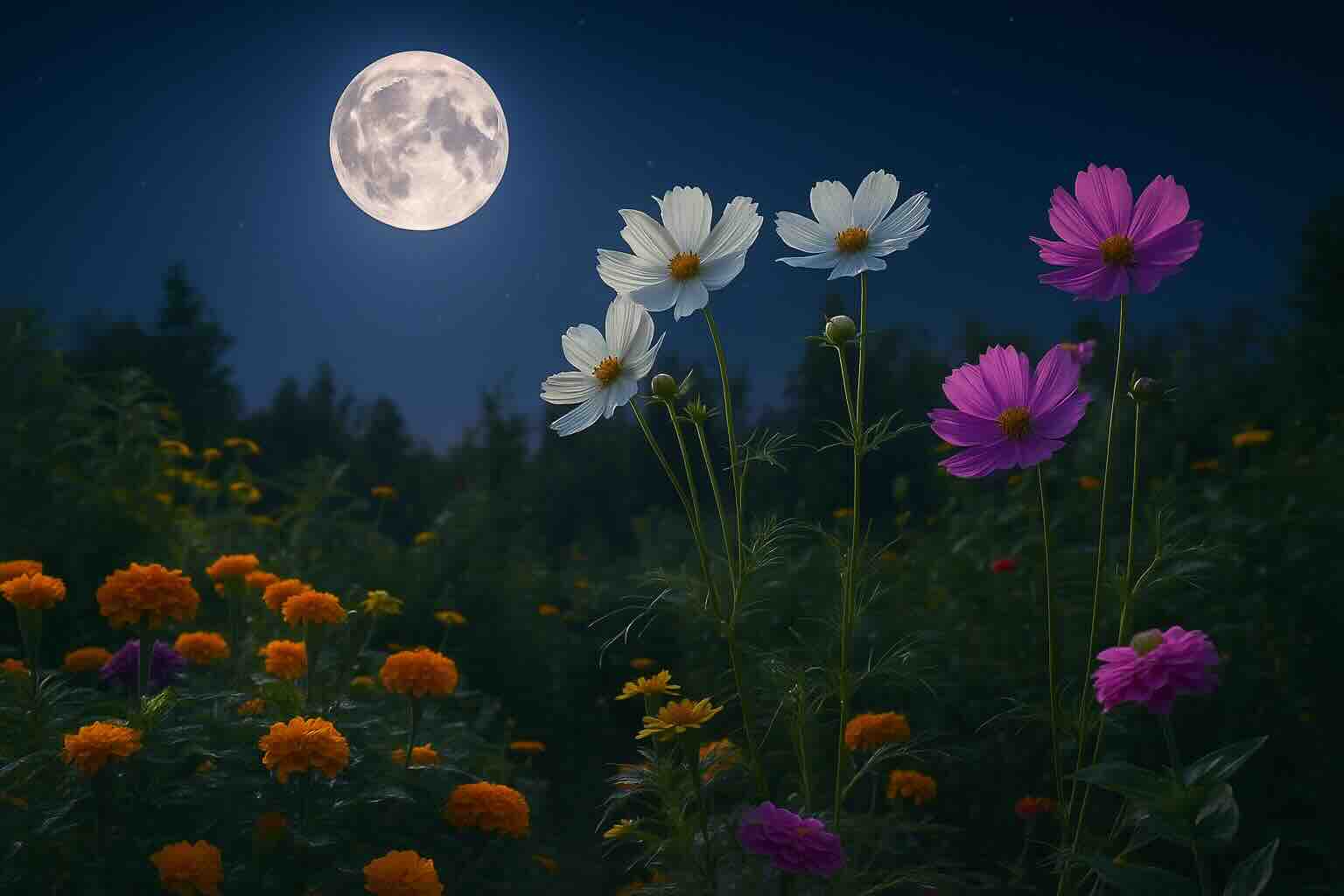For centuries, gardeners have looked to the sky for guidance. The moon, with its steady rhythm of phases, has long been tied to planting traditions. In 2025, more people are exploring moon gardening not only for vegetables but also for flowers. By syncing planting and care with lunar cycles, you may find your blooms stronger, longer-lasting, and more radiant than ever before.
Why Flowers and the Moon Are Connected
The theory behind moon gardening is rooted in water. Just as the moon pulls tides in the ocean, it is believed to influence water in the soil and even the sap inside plants. During certain phases, the ground retains more moisture, which can encourage germination and growth. While the scientific debate continues, countless gardeners find comfort, structure, and even better results when planting with the moon.
Flowers, in particular, respond strongly to cycles of light and energy. Many varieties bloom with the rise of the full moon, while others thrive best when planted during waxing or waning phases. For gardeners, it’s less about strict rules and more about tuning in to rhythms that make the process more natural and intentional.
The Waxing Moon: Planting for Growth
When the moon moves from new to full, its light gradually increases. This waxing phase is associated with upward energy. It’s an ideal time to plant flowers that produce above the ground, especially those meant for cutting or displaying.
Annuals: Zinnias, cosmos, and sunflowers all thrive when planted under the waxing moon. Their strong stems and bright blossoms seem to respond well to the rising lunar pull.
Climbing flowers: Morning glories and sweet peas use the waxing phase to shoot upward with vigor, creating trellises full of color.
In 2025, the spring waxing moons line up with ideal planting windows across much of the Northern Hemisphere, making it a perfect year to experiment.
The Full Moon: Energy for Blooms
The full moon is a moment of peak energy. Many gardeners swear that flowers planted or tended during this phase bloom more brilliantly. The extra light at night is also thought to affect plants in subtle ways, encouraging bud formation.
Roses: Known for their deep connection to cycles, roses pruned or cared for at the full moon often deliver lush, fragrant blooms.
Dahlias and lilies: These bold flowers seem to flourish when aligned with the heightened energy of the full moon, creating show-stopping displays.
Even if you don’t plant during the full moon, it’s a wonderful time to enjoy your garden at night. Many flowers release their fragrance after dusk, and moonlight gardens can feel almost magical.
The Waning Moon: Root Strength and Maintenance
As the moon begins to shrink from full back to new, energy is believed to shift downward, favoring roots. This is the perfect phase for planting perennials, bulbs, and flowers that rely on strong underground structures.
Tulips and daffodils: Planting bulbs during the waning moon can help them establish deep roots that support years of reliable spring blooms.
Perennials: Lavender, echinacea, and hostas benefit from the grounding energy of the waning phase, building strong root systems for long-term health.
It’s also the right time for weeding, pruning, and transplanting, since growth energy is not focused on upward expansion. Many gardeners find that weeds pulled during waning phases are less likely to return quickly.
The New Moon: Reflection and Soil Care
The new moon is the darkest phase, symbolizing rest and renewal. Many gardeners use this time to focus on the soil rather than direct planting. Enriching garden beds with compost, mulch, or natural fertilizers during this phase helps prepare the ground for the next cycle.
While few flowers are directly planted at new moon, it’s an excellent moment for planning your garden’s layout, ordering seeds, or starting indoor seedlings that will later be transplanted during waxing phases.
Science and the Lunar Tradition
While mainstream science has yet to prove a direct link between lunar phases and plant success, research does show that plants are sensitive to even low levels of light. Gardeners who work with lunar cycles often report a sense of alignment and calm, which can translate into better care and attention for their flowers.
In other words, lunar gardening may not be magic—but it’s a mindful system that helps gardeners slow down and connect with natural rhythms, which is just as valuable.
Moonlit Flower Gardens in 2025
This year is a special one for flower enthusiasts. With several supermoons and lunar eclipses on the calendar, 2025 offers unique opportunities to experience your flower garden under extraordinary skies. Imagine standing among blooming roses or glowing white lilies with a supermoon lighting the night—it’s an unforgettable way to enjoy the connection between sky and soil.
Final Thoughts: Planting Beauty with the Moon
Growing flowers by the moon in 2025 is more than a technique—it’s an experience. Whether or not the moon directly impacts growth, aligning your garden with lunar phases makes you more observant, more patient, and more in touch with nature. Zinnias, tulips, roses, and morning glories all have their perfect lunar moment. What matters most is that you enjoy the process.
So this year, let the moon guide your garden. Plant with intention, care with rhythm, and watch as your flowers reward you with beauty that feels timeless, rooted in both tradition and wonder.
